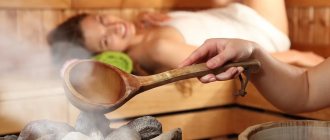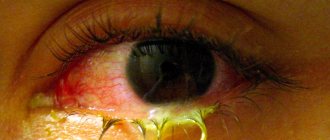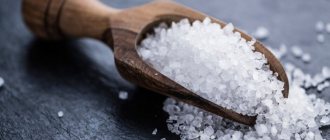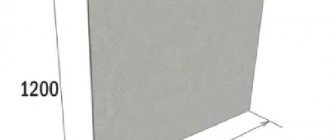Why does it hurt
Much to the regret of lovers of a real Russian holiday, headaches and nausea after visiting the steam room are a common occurrence. The main reason for the malaise is the unusual and heavy load on the entire body.
The human cardiovascular system does not always adequately respond to sudden changes in external temperature. The body as a whole is experiencing unexpected stress. Chronic illnesses may worsen and symptoms of new problems may appear.
After a bath, pain in the head occurs due to a number of external factors.
- Insufficient oxygen. Many people, while in the steam room, pay attention to the unbearable stuffiness, but most attribute this to the high temperature.
- Carbon monoxide poisoning. Poor ventilation of the bathhouse and the presence of a heating stove are an ideal combination for the accumulation of substances harmful to the body. You can get a burn in the bathhouse even after 5 minutes of stay. Symptoms of carbon monoxide poisoning: headache, nausea, weakness in the limbs and suffocation.
- Incorrect posture. It is important to carry out bathing procedures while lying down; hot air is distributed unevenly in the steam room.
- Heatstroke. Beginners should not steam for long. High temperature and moist steam will often cause overheating.
- Alcohol abuse. Strong drinks overload the body, which is already under severe stress in the sauna.
- Vascular reaction. High temperature is a big burden for all human organs and systems. The walls of blood vessels are especially susceptible to this factor. A long stay in the bathhouse leads to increased blood pressure and a headache.
- Physical exercise. Visiting a steam room after the gym, a long run, or solving many everyday problems can have a bad effect on a person.
- Allergic reaction. The body's sensitivity to various odors also causes headaches. We are talking about brooms, medicinal herbs and essential oils used in the steam room.
↑
Take the Attention Test! Find 10 differences! (click right here!)
Treatment with folk remedies
A severe headache after a bath is exactly the case when traditional medicine can help. It is very useful to use infusions and decoctions of medicinal herbs. Here are some popular remedies:
- You need to prepare an infusion of dried lemon balm. It is taken in the proportion of 3 teaspoons per glass of hot water, infused and drunk in small sips.
- The same remedy can be prepared from elderberry. One tablespoon of the plant is poured with boiling water (one glass), left for 20 minutes and a little honey is added. Now you can drink.
- St. John's wort infusion (1 tablespoon per glass of hot water). They prepare it exactly the same way.
A severe headache that occurs after a sauna, bath or shower is a serious problem. First, you can try to cope with the trouble on your own. If it does not go away in the next one or two days, you should consult a doctor.
If your head hurts and feels dizzy too often when visiting a bathhouse, don’t think twice about it. You urgently need to go to a medical facility to receive full treatment. The first thing you should do is visit a therapist. After the diagnosis, he will determine the cause of the disease and give the necessary recommendations.
As a rule, in such situations, drug therapy is prescribed. The most effective means:
- Diazepam;
- Glycine;
- Corvalol;
- No-shpa;
- Cavinton.
- Aromatherapy. This method is guaranteed to help without harming your health. You need to mix a few drops of mint, chamomile and orange essential oils in a ratio of 5:2:2. Afterwards, dilute the resulting mixture in a container with water intended for sprinkling stones in the steam room. When you inhale this vapor, the pain goes away almost instantly.
- Drink with St. John's wort. St. John's wort (1 tablespoon) pour boiling water (200 ml) and boil for a quarter of an hour. Afterwards, the drink must be strained and, divided into 3 approximately equal parts, drunk while in the sauna (in several passes).
- Elderberry infusion. Pour boiling water over elderberry (1 tbsp) and let it brew for a third of an hour. Take the finished infusion with you to the bathhouse and drink there in several sips, after adding honey (1 tsp).
These simple recipes will help greatly relieve pain or even eliminate it completely.
You can get rid of discomfort after a bath, normalize blood pressure and improve your well-being with the help of folk remedies. The following herbal infusions are characterized by special analgesic properties:
- Melissa decoction. To prepare it, you will need to take 3 teaspoons of dry herbs and pour a glass of boiling water and let it brew. The resulting broth should be filtered and taken in small sips.
- St. John's wort infusion. You need to pour a tablespoon of the mixture into a glass of boiling water. After 15 minutes, strain carefully. It is recommended to take the decoction in small portions.
- Elderberry based product. A tablespoon of the leaves of this plant should be poured with a glass of boiling water and left for 20 minutes. When the prepared product has cooled slightly, it must be seasoned with a small amount of honey. The infusion is ready for use.
The presented recipes from traditional healers help cope with discomfort after a steam bath. However, they do not answer the question “why do you have a headache after a bath?” The next day, if the discomfort persists, you should consult a doctor. This is probably due to serious health problems, for which steaming is simply prohibited.
What causes pain in the morning
Outwardly healthy people may experience painful illness after a relaxing stay in a steam room. This happens due to the heavy load on the body. An irrational approach to the process can result in headaches in the morning and cause the manifestation of various diseases.
The described ailments are more often encountered by people prone to bad habits. Those who are prone to cardiovascular diseases are at risk. Any health problems, especially chronic ones, begin to worsen in the bathhouse.
There are a number of diseases for which visiting a bathhouse is prohibited or undesirable:
- Kidney diseases;
- Stomach and duodenal ulcers;
- Migraine;
- Epilepsy;
- Inflammatory processes of different localization;
- Neoplasms;
- Gallstones.
↑
https://gidpain.ru/bolit/golova-posle-bani.html
What to do if you have pain
If you cannot avoid the problem, you need to try to eliminate it. First, you can take a painkiller: Nurofen, Tempalgin, Analgin.
In addition to tablets, herbal infusions based on St. John's wort, lemon balm or elderberry will help cope with pain.
Sometimes it’s enough to go out into the fresh air, lie down in silence, and drink cool water. If headaches appear the next day, rest, drinking plenty of fluids and painkillers will help. You need to measure your blood pressure level.
↑
The appearance of chills during prolonged exertion or stress, or disturbance of pressure in the arteries
In most such cases, the appearance of such a problem indicates that the body uses chills to eliminate the effects of stress or overexertion. Therefore, after a stressful situation, you need to drink weak herbal infusions to calm down, and then rest in complete peace. Abundant consumption of sour decoctions of various berries, tea with lemons, and mousse will also help. To remove substances released during stress from the body, you need to take any diuretic, for example, tincture of lingonberry leaves. You cannot bring your body to complete nervous exhaustion or overexert yourself. You need to take care of yourself, then chills will not appear.
Often this feeling occurs in patients with vegetative-vascular dystonia. Such people always have cold hands and feet, they cannot warm up. With this disease, doctors note a very poor tone of the circulatory system in the patient. In order to get rid of chills in such a situation, you need to harden the body, use a bathhouse, and a contrast shower. It’s especially good to steam in winter and then jump into a snowdrift.
If a person’s blood pressure sharply decreases or increases, then very often the patient’s body reacts to changes in pressure in the form of chills. When a patient experiences symptoms of hypertension, pathological changes occur not only in the blood vessels, but also affect the entire circulatory system. During a hypertensive crisis, very often the patient develops severe chills, which disappear only after measures to stabilize blood pressure.
Which doctor should I contact?
Often, after physical exertion or mental stress, people feel worse. The nature of the pain can be varied. Compressive, pressing, throbbing pain in one side of the head is possible.
Pain during exercise is often functional in nature. They can occur for many reasons:
- Changes in temperature and atmospheric pressure;
- Stressful state during physical activity;
- Heat and stuffiness in the room;
- Dehydration is often the cause of headaches;
- Eat a large meal before training;
- Overweight people often suffer from hypoxia during exercise.
The likelihood of illness is higher in people with specialties: programmer, accountant, driver, who spend many hours at the computer or constantly strain the muscles of the eyes and neck.
Persistent cephalgia, which occurs regularly, requires mandatory consultation with a doctor in order to exclude serious pathology and prescribe the correct treatment in a timely manner.
Classification of pathogenic factors
If chills without fever appear at night, the causes of such an unpleasant condition depend on the state of the nervous system, age and gender of the patient. For example, a child may have a bad dream and wake up scared. Adult women often suffer at night from hot flashes and other symptoms of approaching menopause. The muscle mass of men voluntarily relaxes after a physically tiring day of work, so the appearance of chills is possible.
It is important not to forget that the causes of chills without fever in women and men can be pathological. In this case, we are talking about symptoms of ARVI, flu and colds, which must be treated with conservative methods.
Hormonal disorders and a jump in blood sugar to a critical level are also possible.
The conclusion suggests itself: physiological factors are temporary and disappear immediately after the main “aggressor” is eliminated. As for pathogenic factors, such a clinical picture requires conservative treatment, specialist supervision and diagnostics.
What tests are usually prescribed?
At an appointment with a neurologist, a physical examination of the patient is performed: basic neurological reflexes are checked and the neck muscles are examined.
The doctor writes out a referral for tests: general blood test, biochemical blood test, blood sugar test.
A general blood test with an increase in ESR or an increased content of leukocytes indicates inflammation in the body.
Blood biochemistry may indicate a deficiency of one of the vital elements, which leads to discomfort in the head area.
Low blood glucose levels are often accompanied by cephalgia, dizziness and weakness.
The doctor may write a referral for additional tests:
- The gas composition of arterial blood can reveal cerebral hypoxia.
- A blood test for hormones determines various abnormalities in the functioning of the hypothalamus.
A neurologist can give a referral to one or more diagnostic methods:
- Magnetic resonance imaging (MRI) - excludes the presence of various neoplasms (tumors and cysts), aneurysms. The photographs clearly show post-traumatic defects, neurodegenerative abnormalities, and changes in blood vessels affected by atherosclerosis.
- Computed tomography (CT) is the most informative method for studying the brain. It gives a clear idea of pathological changes in the skull and brain, pathology of bone tissue, blood vessels and brain structures. Provides information about the consequences of traumatic brain injuries. The disadvantage of this method is the significant radiation dose during the study.
- Electroencephalography gives an idea of the presence of pathological changes in blood vessels and impaired cerebral circulation.
- Doppler ultrasound (ultrasound of the vessels of the head and neck) - shows the presence of atherosclerotic plaques in the arteries; narrowing and tortuosity of the arteries, leading to brain hypoxia; peripheral vascular resistance.
- Rheoencephalography (REG) - gives an idea of the tone and blood flow of blood vessels. Using REG, the following are diagnosed: hypertension, atherosclerosis, vegetative-vascular dystonia.
- MRI of the cervical spine - the presence of cervical osteochondrosis can cause pain in the head and neck, which intensifies when turning the head.
- Rheovasography of cerebral vessels (RVG) - shows the quality of blood flow through the great vessels, evaluates collateral circulation.
- Radiography will be less known. In the image you can only see the bone structures of the skull, soft tissues are not visible.
There is no need to panic when scheduling such a serious examination. The doctor excludes rare severe pathologies and looks for the causes of the pain process.
Based on the studies, if no serious organic lesions are found, the cause of the disease is usually diagnosed. It develops as a result of: vascular spasms, cerebral hypoxia, hypertonicity of cerebral vessels, hormonal imbalances, vegetative-vascular dystonia or osteochondrosis, provoked by physical or psycho-emotional stress.
↑
Features of the clinical picture
So, if chills appear for no reason, and there is no fever or other symptoms of a cold, this does not mean that everything is fine with your health. If the patient listens more carefully to his own body, he will feel certain changes in his overall well-being. First, it is uncontrollable trembling throughout the body, then barely noticeable problems with the masticatory muscles of the facial joints, then severe chills in every part of the body.
A violation of the temperature regime is possible, but the mark on the thermometer does not increase, but decreases to a minimum value. The patient is characterized by a loss of strength, a desire to lie down and sleep, and there is no timely response to provoking environmental factors. A person feels that he is getting sick, but the body temperature does not rise. Even in such a clinical picture, it is necessary to undergo treatment, but first contact your local physician to determine the cause of the growing ailment.
Before studying the causes of severe chills without fever, it is important to understand what is happening in the body at this moment. In essence, this is a vasospasm, which was preceded by a certain provoking factor. As a result of this imbalance, the vessels narrow pathologically, and the decrease in lumen interferes with normal blood flow. This suggests that all important processes are slowing down, and the body is at risk of internal imbalance. That is why such a symptom cannot be ignored.
Safe medications and pills
When planning a visit to the doctor, the patient should be prepared to answer questions about how often pain occurs and what its intensity is. This will help the doctor develop the correct treatment tactics.
↑
Groups of drugs effective for episodic attacks of pain
Medicines for the treatment of pathology are non-steroidal anti-inflammatory drugs (NSAIDs). They have an analgesic effect, relieve inflammation, and eliminate swelling.
Often prescribed:
- Ibuprofen-400 mg per day;
- Ketoprofen-100 mg/s;
- Naproxen-500 mg/s;
- Meloxicam-7.5-15 mg/s;
- Celecoxib-200 mg/s.
Most NSAIDs have a negative side effect: with long-term use, they negatively affect the organs of the gastrointestinal tract, including the development of drug-induced gastritis.
Medicines Meloxicam and Celecoxib are new generation drugs that do not have a negative effect on the gastrointestinal tract. The disadvantages of using these drugs include the relatively high price.
Analgesics are often used at home to relieve an attack. They do not treat the disease, but only relieve pain. Drugs in this group are suitable for stopping episodic attacks, but their systematic use leads to the occurrence of abuse syndrome.









